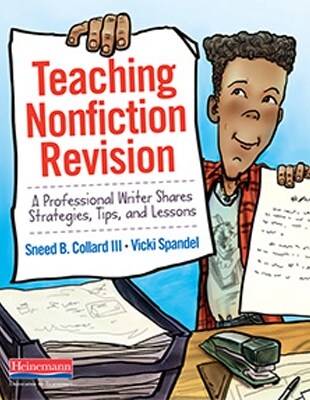
Imprint
Heinemann
Author(s)
Sneed B. Collard III, Vicki Spandel

Imprint
Heinemann
Author(s)
Sneed B. Collard III, Vicki Spandel
What happens when a bestselling nonfiction children’s book author pairs up with a nationally known writing teacher to discuss revision strategies? Magic.
Sneed B. Collard III and Vicki Spandel blow the roof off everything you thought you knew about teaching nonfiction writing and the purposes for revision. Dozens of strategy lessons pulled from Sneed’s professional writing experience followed by Vicki’s classroom-savvy tips and exercises give you the nuts and bolts of teaching revision to make nonfiction writing more meaningful, useful, and enjoyable for the reader.
Using a “big-to-small” process of revision, from Big Picture ideas down to individual words, Sneed and Vicki demystify revision and help students become clear, persuasive, compelling—even entertaining—writers. “With your encouragement and guidance,” they write, “students will discover the joy of turning their first rough ideas into something readers cannot put down.”
Part I: Setting the State
Part II: Big-Picture Revision
Part III: Scene Revision
Part IV: Paragraph Revision
Part V: Sentence Revision
Part VI: Word Revision
Part VII: The Final Wrap
